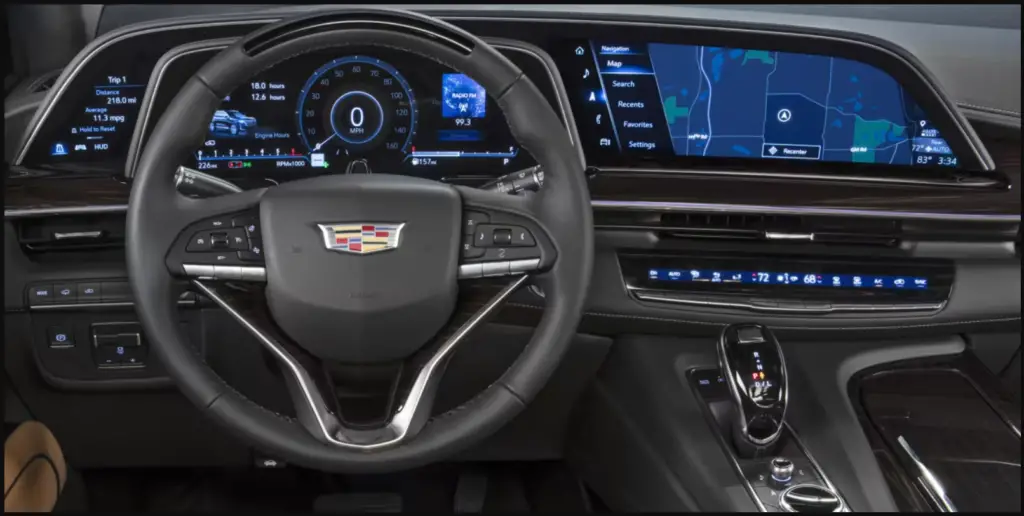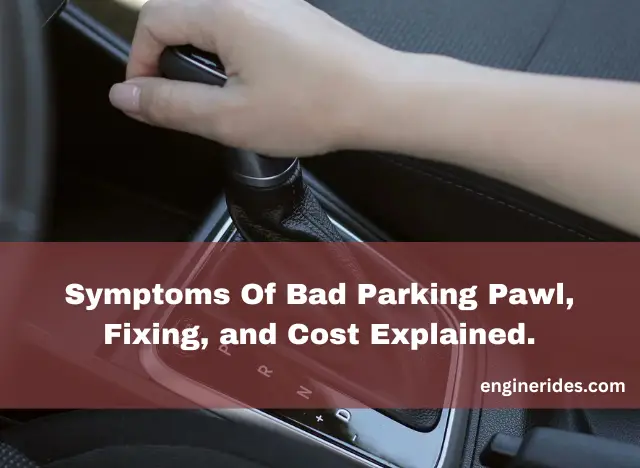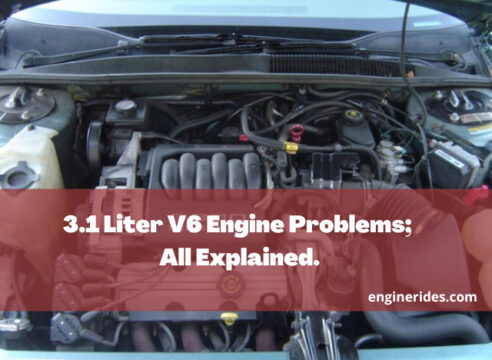If your Cadillac won’t turn over but the lights come on, it indicates a potential issue with the starting system. When you turn the key, the electrical components like the lights may work, but the engine fails to crank. This problem could stem from various factors such as a weak battery, faulty starter motor, or poor connections.
Understanding these issues is crucial for troubleshooting and resolving the problem, ensuring your Cadillac starts smoothly each time. In this article, we’ll explore common reasons why your Cadillac may exhibit this behavior and provide simple solutions to get you back on the road.
Table of Contents
What does it mean when your Cadillac won’t turn over but the lights come on?
If the lights on your Cadillac are on but it won’t start, there may be a problem with the starting circuit. The ignition switch, body control module (BCM), engine control module (ECM), starter relay, starter motor, and numerous wiring connections are among the parts of this circuit.

The ignition switch initiates the sequence of events by signaling the BCM, which subsequently communicates with the ECM to turn on the starter relay. The starter motor then receives power when the relay closes its contacts.
- There could be a number of problems if the lights come on but the engine won’t start:
- defective parts of the starting circuit, such as the starter motor, starter relay, BCM, ignition switch, or ECM.
- Problems with connections or wiring prevent components from communicating or transferring power properly.
- locked-up modules in the car’s electrical systems, which might need to be reset by disconnecting the battery.
The diagnosis
Checking all fuses, checking for codes in the ECM and BCM, making sure both modules are communicating, and using live data from a compatible scan tool to evaluate the ignition switch state and starting relay position are crucial steps in diagnosing the issue. Using a voltmeter to check for power at the starter terminals might also assist in identifying whether the starter motor is the problem.
If modules are locked up, there are instances where the issue can be fixed by following a battery disconnect process. To fix the problem and get the Cadillac functioning again, more investigation and maybe component replacement may be required if the issue persists.
What would make a Cadillac not start except for the above reasons?
Most commonly – Battery Issues
Battery issues are the most common cause of the starting issues in your Cadillac, and there are two main things to check up.
Dead Battery
One of the most frequent causes of an automobile not starting is a dead battery. Dimmer or nonexistent dashboard lights, a slow-moving engine, and clicking noises when the engine is trying to start are the signs of a dead battery.
Why Does My Starter Keep Going Out? All You Need To Know
ENGINE RIDES
To address this issue,
- Attempt to jump-start the vehicle using jumper cables and a running vehicle with a charged battery.
- If jump-starting fails or if the battery is old and unable to hold a charge, consider replacing the battery with a new one.
Corroded Battery Terminals
Corrosion buildup on the battery terminals can inhibit the flow of electricity from the battery to the vehicle’s electrical system.
To fix this problem on your own,
- Mix a solution of baking soda and water to create a cleaning solution.
- Disconnect the battery terminals and apply the cleaning solution to the terminals and cable ends using a wire brush.
- Thoroughly scrub the terminals and cable ends to remove any corrosion buildup.
- After cleaning, rinse the terminals and cable ends with clean water and dry them with a clean cloth.
- Reconnect the battery terminals securely, ensuring a tight connection to promote proper electricity flow.
From my experience, I can say that the dead battery issues through jump-starting or replacement and cleaning corroded battery terminals, you can effectively troubleshoot and resolve common battery-related problems that may prevent your Cadillac from starting.

02. Faulty Alternator
The alternator is crucial for charging the battery while the vehicle is running, and,
Symptoms of a faulty alternator include,
- Battery warning light illuminated on the dashboard.
- Dim headlights, especially noticeable at night or when using other electrical accessories.
- Electrical accessory issues such as dimming interior lights or erratic behavior of electronic components.
To diagnose and resolve alternator problems,
- Have the alternator tested by a qualified mechanic or automotive technician using specialized diagnostic equipment.
- If the alternator is found to be faulty or not functioning optimally, it may need to be replaced with a new or rebuilt unit.
- Replacement of the alternator should be performed by a professional to ensure proper installation and functionality.
Do not hesitate to promptly address symptoms and have the alternator tested and replaced if necessary, you can prevent further electrical system complications and ensure reliable vehicle operation.
03. Bad Starter Motor
The starter motor is responsible for initiating engine cranking to start the vehicle.
Symptoms of a bad starter motor include,
- Clicking noise when attempting to start the engine, but the engine does not turn over.
- In some cases, the starter motor may fail to engage altogether, resulting in no cranking or response.
To address a bad starter motor,
- It’s advisable to consult a mechanic or automotive technician for diagnosis and potential replacement.
- The mechanic will conduct tests to determine if the starter motor is indeed faulty or if the issue lies elsewhere in the starting system.
- If the starter motor is confirmed to be the problem, it may need to be replaced with a new or refurbished unit.
- Replacement of the starter motor should be performed by a professional to ensure proper installation and alignment with the engine’s flywheel or flexplate.
Dealing with a bad starter motor promptly is crucial for ensuring reliable vehicle starting and operation. By seeking professional diagnosis and potential replacement, you can address starter motor issues effectively and restore proper engine cranking functionality to your Cadillac.
04. Fuel System Problems
Fuel system issues are common, but not actually serious, and you can fix those with some simple solutions like filling the fuel tank if it is empty.
Empty Fuel Tank – A straightforward yet sometimes overlooked cause.
Refill the tank with fuel.
Clogged Fuel Filter – Accumulated dirt obstructs fuel flow, impeding starting so, replace the fuel filter.
Failed Fuel Pump – Supplies fuel from the tank to the engine; no fuel equals no start, so the best thing is to have a mechanic test and potentially replace the fuel pump.
05. Other less common problems
According to what I’ve seen in my life, there are several possible causes of electrical problems in Cadillacs that don’t start. A lack of tight connections can prevent the flow of electricity required for ignition, especially at the battery terminals and critical junctions.
There is a chance that blown fuses in the fuse box will affect the starting system and need to be replaced. The starting procedure may also be hampered by a malfunctioning ignition switch, which is in charge of sending the start signal.
It is important to promptly address these electrical issues, and Cadillacs of today also have sophisticated security features like immobilizers, which can sometimes cause problems when starting the vehicle. For detailed reset instructions related to the security system, refer to the owner’s handbook.
How do I know if it’s my starter, battery, or alternator, and how to differentiate?
It will be very important for you to find out what component has really gone wrong. So here is how you can find it out.
Understanding whether the issue lies with the starter, battery, or alternator involves a methodical process:
Firstly, examine the symptoms
Battery Issues – If the headlights are dim, the engine cranks slowly, or you hear clicking sounds when turning the key, it indicates a potential battery problem.
Starter Problems – If the engine fails to turn over when you turn the key, accompanied by a distinct clicking noise, suspect an issue with the starter.
Alternator Malfunction – Dimming lights while driving, frequent need for jump starts, or dashboard warning lights hint at a potential alternator problem.
Hooked Battery Up Backwards Now Car Won’t Start; What Should You Do?
ENGINE RIDES
Next, perform diagnostic tests
- Battery Test
Use a multimeter to measure the battery voltage. A fully charged battery should read around 12.6 volts. Anything significantly lower may indicate a battery issue.
- Starter Check
Listen for a clicking noise when attempting to start the car. This could signify a faulty starter solenoid or motor.
- Alternator Inspection
Use a multimeter to check the alternator’s output voltage while the engine is running. It should read around 13.8 to 14.2 volts.
Finally, differentiation
Based on the symptoms and diagnostic results, you can differentiate between the components:
- Dim lights and sluggish cranking point to a battery problem.
- Clicking noise during startup indicates a potential issue with the starter.
- Dimming lights while driving or frequent need for jump starts suggests an alternator issue.
If uncertain, seek guidance from a seasoned mechanic who can guide you through the diagnostic process and recommend appropriate repairs. Remember, a systematic approach is key to identifying and resolving automotive issues effectively.






